The weight of paper was brought up just today when we were discussing the sizes of paintings I was doing. I said that this last painting was the biggest I had done to date, at 10x14 inches but that to go bigger I'd have to cut my own paper, not use paper from the precut Arches pads. He asked how big I could go. I told him that I had several pieces of both 140 lb and 300 lb sheets that were 22x30 inches but I didn't know if one could get larger watercolor paper than that. I know I could get rolled paper, so I could extend the length but I don't know if the width could go up.
"What does the poundage of paper represent", he asked.
Hmmm, "good question", I responded. "It refers to it's thickness, 300 being thicker than 140."
"But what does it actually mean?"
"Dunno."
"Guess you have some research to do, huh?", he laughed.
"Yep." I rolled my eyes, thinking I may have gotten myself into more than I'd bargained for when I said I'd do this. So, lets get started... here's the lowdown on watercolor paper (and everything else!).
Paper is measured in pounds, which corresponds to the amount that one ream (500 full sheets, size 22"x30") weighs. So therefore, a light paper would be 90 lb per 500 sheets, for instance, while a heavy paper would be 300 lb per 500 sheets. The size of 22"x30" goes back to pre-industrial times and has never really been changed. (It's the usual size sold, although technically, there are other large sizes.) Archival watercolor paper is made from 100% cotton rag and will last for centuries without needing conservation techniques. Artists select fine watercolor papers by not only weight but also finish. Generally manufacturers offer three finishes, Rough, Cold Pressed and Hot Pressed. The cold pressed and rough is best for transparent watercolors (which is what I use) and hot pressed paper is best for opaque watercolors and drawing(because of it's smoother surface). The cold pressed paper gives a terrific nubbly surface that cradles the water and paint just enough and the wonderful texture adds to the look of the overall painting.
Arches paper is what I use exclusively for my watercolor paintings. The company is 5 centuries old. Ya, I know. Wow. In 1492, the same year Columbus sailed that ocean blue, Arches started making fine, hand made paper. In Arche, France, hence the name. It's well known as one of the best papers on the planet. Hey, they have more than 500 years of practice, hehehe. Because the watercolor paint I use is transparent, the texture of the paper shows through. I want a tight, uniform weave that absorbs evenly, lets the water flow and can stand to be worked and reworked with a paint brush without showing wear, and is archival safe (won't deteriorate over time). That's what I get with Arches. It's perfect, beautiful. Yummy. :o)
Next. How about Copic markers, my newest acquisition! :o) These markers are made in Japan, like the Holbeins, and were created specifically for the manga artist. Manga, which translates to "whimsical pictures", is the word used to describe Japanese Comics. Why are they so good, you ask? Well, there are many answers to that question. First, these professional grade markers come in 322 colors, allow the nibs to be replaced and are refillable, which makes them economical in the long run. You don't throw away you're entire investment when they are empty, you just replace what needs replacing. The ink refills can also be mixed to create even more colors and Copic sells empty refill bottles and pens just for this purpose. The colors are transparent and also highly blendable with one another. This means that one can layer color over color to create new shades/effects and not get mud. They work just like the Holbein watercolors do, the color deepens as you re-ink a section. The markers are color and shade coded (with numbers and letters) and the coding refers to the color wheel. This allows artists to plan out their colors. I can choose to do a background in shades of sepia (grayish brown... ish), for instance, and I can make sure that the Copics I use will all blend with the paint I lay down. It is widely held that these are the best markers in the world, their quality (nibs etc.) and color formula is truly excellent. Even though they're initially expensive, all of the above speaks to their value.
Onward and upward, so to speak. :o) Frisket is a water-based liquid latex. It's used to mask off areas of paper that the artist wants to leave white. The frisket is usually colored a slight blue color so it can be seen on the white paper after it's been applied. Watercolors are then painted over top of the lines and sections that are masked. For instance, I could mask off a section that's going to be a light colored flower and then be free to paint the background without worrying that I may intrude into that space that's for the flowers. Remember, watercolors are transparent, unlike say, oils. If I lay down leaves in a section that a flower is going, I can't go back later and put a flower there because the leaf will show through. Masque Pen is just a high tech way of dispersing frisket. You see, frisket used to (and still is by many artists) be brushed onto the paper using an old paintbrush (because frisket tends to "gum up" the bristles), so artists wouldn't risk expensive brushes. Now, Masque Pen came up with a brilliant idea. Use a needle-like system to add frisket so there's no bristles to gum up! Smart, those. Hehehe. I have both the regular nib and the super fine nib, it works beautifully. I suppose if I wanted to mask off large areas I'd still use a brush, but this nib system really works great.
Watercolor Pencils. These are essentially, dried watercolor paint inside a pencil outer cover. Watercolor paint comes in two forms, pan (dry cubes) and tubes of paste. The watercolor pencils utilize the pan form, but instead of being a cube, they're inside a pencil, which can be sharpened just like any other pencil crayon. They work just like pencil crayons actually, except with watercolor pencils you can add water to the drawing to "wake up" the color. When water is added to colored sections of a drawing, the depth of the color increases and the intensity is magnified. I use them for smaller drawings that will have less detail than a regular painting. They allow one to be very precise about where the color goes. I get the freedom of coloring with pencil crayons but still keep the brilliance and depth that I get from paint. Kinda nice.
Workable Fixative is used to "set" the medium you're working with. Many mediums like pastels, watercolors & charcoal benefit from being protected and preserved. Spraying the paper with a thin coat of this liquid stops smudging etc. Other fixatives also help in lightfastness, adding a UV protection for artwork. The "workable" part implies that one can still add to a painting after it has been sprayed, but I've been warned that the properties of the paper change enough so many blending techniques for Copic markers and watercolor paints are less effective and harder to achieve after a painting has been "fixed".
I'm sure you've noticed that I didn't mention paint brushes yet. Well, I don't know enough about them to give advice, :o). I used the expert guidance of the artists who work in the art store, Island Blue, to choose my brushes. I can't afford the best, they run hundreds of dollars for each brush. They're made of things like Sable and Squirrel hair. My brushes are synthetic and moderately priced at $10- $50 each, depending on size. And about size... I have found that using larger brushes is easier. They hold more water and therefore you get a smoother application of paint. Mostly, I paint with a 10 or an 18 round brush (for 5x7" & 10x14" paintings, respectively). But as I move into larger sheets of paper I will move to my 30 round, any smaller would be a time waster.
As for extras, I'm lost without tissues. (Like plain, "without lotion", Kleenex). No, not to cry into when I'm frustrated! I paint with brush in left hand and tissue in right. The tissue usually ends up sopping wet from soaking off excess water from the brush tip. By the end of painting day I have heaps of crumpled, wet, multicolored tissue strewn around the table on which I paint. I seem to throw them carelessly over my shoulder when they get too gimpy, is that a word?
Another thing, I don't stretch my paper. Ya, lazy again, plus, when I tried it, it didn't really make much difference. I prefer to use heavier paper and leave it natural. I don't even affix it to a board. I like being able to move it this way and that without the excess size of a foam-core board behind it. And if I get paint on the table? ... hey, I do have a tissue in my hand! ;o)
Well, that was the longest post ever, prolly waaaayyy too much information. :o) But, there you go. I'll be back soon with some cool art, and much less talking, I promise. Maybe the next post I should just be mute? Who the hell am I kidding? I couldn't be mute if my life depended on it!
Later Peoples. Just not too much later, K?
Tweet this Post

















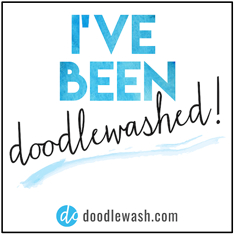
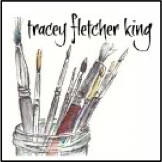
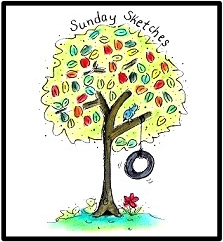
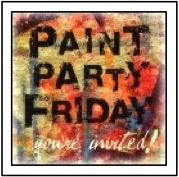

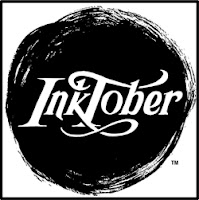

That was really interesting. I knew nothing about this (except paper, because I work with printed materials). The markers sound especially wonderful!
ReplyDeleteThanks for sharing all this lovely information, Jenn! Quite helpful for the more advanced watercolorist. That means 'much later' for me. Still the Niji brush stage and Caran d'Ache watercolors for this newbie. I've fallen in love with watercolors, too, after thinking I was a pastel kind of gal for years! Nothing like the feel of water and brilliant pigments on thick textury paper. I get goosepimply sometimes especially when I'm in the zone - some music and rosé wine help. ^_^ . Happy paints, kindred painter spirit!
ReplyDelete